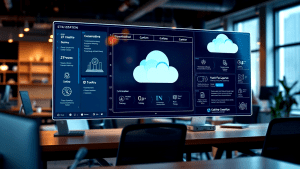In today’s fast-paced digital landscape, running a successful marketing campaign requires more than just good products or services. The way you communicate with your audience can make or break your campaign. One of the most effective tools to engage and nurture your audience is a well-crafted newsletter. But how exactly do you write a newsletter that grabs attention, builds trust, and drives action?
In this blog, we’ll explore some helpful tips to create compelling newsletters that strengthen your marketing campaign and connect meaningfully with your subscribers. Whether you’re a seasoned marketer or just starting, these strategies will elevate your newsletter game.
Why Newsletters Matter in a Marketing Campaign
Before diving into the tips, it’s important to understand why newsletters remain one of the most powerful channels for marketers. Unlike social media posts that can quickly get lost in crowded feeds, newsletters land directly in your audience’s inbox, offering a personal touch and a direct line of communication.
Newsletters help:
-
Build relationships by delivering valuable content regularly
-
Drive traffic to your website, blog, or landing pages
-
Promote products, services, or special offers
-
Establish your brand as a trusted authority
-
Gather insights through engagement metrics like open and click rates
But to harness these benefits, your newsletter must be carefully crafted. A poorly written newsletter risks ending up unopened or worse—marked as spam.
1. Understand Your Audience Deeply
The foundation of any effective marketing campaign is a clear understanding of who your audience is. This principle applies equally to newsletter writing. Before you put pen to paper (or fingers to keyboard), take time to analyze your subscribers’ preferences, pain points, and interests.
How to do it:
-
Use data from previous marketing campaign or customer research to segment your audience
-
Create detailed buyer personas outlining demographics, challenges, and goals
-
Tailor your newsletter content to address those specific needs and interests
For example, a fitness brand’s newsletter for beginners should focus on foundational tips and motivation, while an advanced audience might prefer detailed workout plans and nutrition advice. When your subscribers feel that your content speaks directly to them, engagement naturally increases.
2. Craft a Catchy Subject Line for your Marketing Campaign
The subject line is the gateway to your newsletter—it’s the first thing your subscribers see, and it determines whether they open your email or scroll past it. A great subject line creates curiosity, promises value, and stands out in a crowded inbox.
Tips for writing effective subject lines:
-
Keep it short and sweet—ideally under 50 characters
-
Use action verbs and urgency when appropriate (e.g., “Last Chance to Save!”)
-
Personalize with the recipient’s name or preferences if possible
-
Avoid spammy words like “Free,” “Buy now,” or excessive punctuation
-
Test different styles with A/B testing to see what resonates
For example, instead of a generic “Monthly Newsletter,” try “Boost Your Productivity This July — Tips Inside!”
3. Deliver Valuable and Relevant Content
Once your subscriber opens your newsletter, the content must deliver on the promise made by your subject line. Valuable content keeps readers engaged, builds trust, and encourages them to take action.
What makes content valuable?
-
Educational: Provide actionable tips, industry insights, or how-tos that help your readers solve problems
-
Entertaining: Use storytelling, humor, or visuals to make your newsletter enjoyable to read
-
Exclusive: Share sneak peeks, special offers, or early access to products unavailable elsewhere
-
Clear and concise: Avoid jargon and keep your message easy to understand and digest
Organize your content with headings, bullet points, and images to break up text and improve readability. A strong call to action (CTA) at the end encourages readers to engage further—whether it’s visiting your website, signing up for a webinar, or making a purchase.
4. Optimize for Mobile and Test Before Sending
Today, a significant portion of emails is opened on mobile devices. If your newsletter isn’t mobile-friendly, you risk losing a big chunk of your audience before they even see your message.
How to ensure mobile optimization:
-
Use responsive email templates that automatically adjust to different screen sizes
-
Keep fonts large enough to read easily on smaller screens
-
Use single-column layouts to avoid clutter
-
Make buttons and links easy to tap
Beyond mobile optimization, always test your newsletter before sending it out. Send test emails to yourself and colleagues to check formatting, links, images, and spelling. Review your email across different devices and email clients to catch any display issues.
Bonus Tip: Measure, Analyze, and Improve your Marketing Campaign
A marketing campaign without measurement is like sailing without a compass. Use your email marketing platform’s analytics to track key metrics:
-
Open rates
-
Click-through rates
-
Bounce rates
-
Unsubscribe rates
Analyze which content resonates most, which subject lines perform better, and what times your audience engages most. Use these insights to continuously refine your newsletter strategy for better results.
Putting It All Together: Sample Newsletter Structure
Here’s a simple template to organize your newsletter based on the tips above:
-
Subject Line: Catchy, personalized, and concise
-
Greeting: Friendly and personalized to build rapport
-
Intro Paragraph: Briefly introduce the newsletter’s theme or purpose
-
Main Content: Provide valuable information with clear headings and visuals
-
Call to Action: Guide readers toward the next step (read more, shop, register, etc.)
-
Footer: Include contact info, social links, and an easy unsubscribe option
Streamline Your Marketing Strategy to Reduce Risks and Expenses
Writing an effective newsletter is a powerful way to elevate your marketing campaign. By truly understanding your audience, crafting engaging subject lines, delivering valuable content, and optimizing your emails for every device, you can build stronger connections and inspire action.
Remember, newsletters are not just a broadcast tool —they’re a conversation starter. Keep testing, learning, and evolving your strategy to stay relevant and make the most of your marketing efforts.
Ready to start writing your next newsletter? Keep these tips handy, and watch your campaigns thrive!




